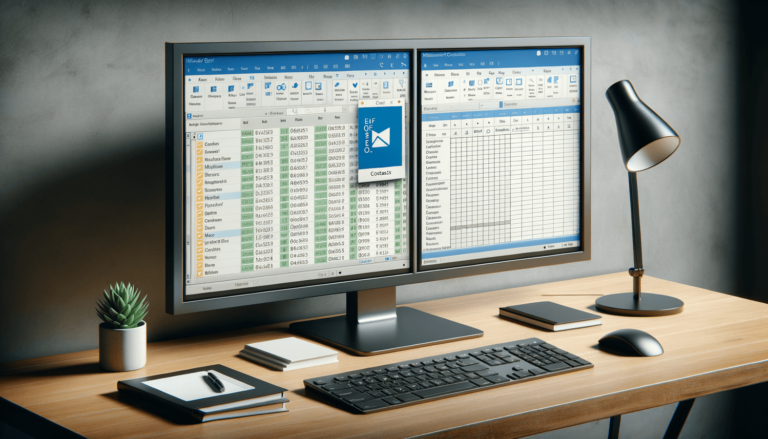

As a professional, it’s common to have a lot of contacts saved in your email account. However, using Outlook to manage contacts can sometimes be tedious, especially when you need to export them to another platform. That’s why in this post, we will guide you on how to export your Outlook contacts to Excel, making the transition smoother and hassle-free. By following these simple steps, you can easily export and save your contacts as an Excel file, allowing you to conveniently access and manage your contacts from anywhere.
Exporting your Outlook contacts to Excel is a straightforward process that allows you to manage and view your contacts in a more structured and convenient way. This guide will take you through the step-by-step process of exporting Outlook contacts to Excel, allowing you to effortlessly access and manage your contacts in an Excel spreadsheet format.
The first step in exporting your Outlook contacts to Excel is to open your Outlook account and select the “File” tab in the toolbar. Next, click “Open & Export,” then “Import/Export.”
From there, you will see a list of options. Click the “Export to a file” option and then click “Next.”
After that, select the “Microsoft Excel” option and then click “Next.”
Finally, select the Contacts folder you wish to export to Excel and then click “Next.” Ensure the “Export to a file” and the “Excel” options are checked, then click “Finish.”
Once you hit “Finish,” the “Export to a file” window will appear. Here you want to ensure you choose the location where you want the file to save and give it a name. You can choose to leave the default file name or make an adjustment by typing in a new file name that works for you. Save the file.
After saving the exported file, you can now open it in Excel. Open Excel, go to the “File” tab, click “Open,” and then navigate to the location you saved the exported file.
Select the file, click “Open,” and then follow the prompts that come up on your screen. Once the prompts are done and the file is loaded, you can now start using your Outlook contacts in Excel.
Exporting your Outlook contacts to Excel is a straightforward process that gives you the convenience of accessing and managing your contacts in an Excel spreadsheet format. By following the steps outlined above, you can export your Outlook contacts to Excel swiftly and with minimal effort. With your contacts now in a spreadsheet format, you can easily view, filter, and edit them to suit your personal or professional needs.
Exporting your Outlook contacts to Excel can be a breeze by following these extra tips:
If you experience an error when exporting your Outlook contacts to Excel, don’t panic. Here are few recommendations you can follow to resolve the issue:
Exporting your Outlook contacts to Excel allows you to efficiently and easily manage your contact details. By following the step-by-step guide and extra tips mentioned in this article, you can quickly export your Outlook contacts without any issues. As a bonus, you’ll have the flexibility to filter, sort, and edit the contacts in Excel, making this process an even more efficient way to handle your contacts.
Here are some frequently asked questions about exporting Outlook contacts to Excel
You only need Microsoft Excel software installed on your computer to export Outlook contacts to Excel. It works with all versions of Excel.
No. Exporting your contacts is a simple process requiring no specialized knowledge or experience with Microsoft Outlook or Excel.
Yes. Once you have exported Outlook contacts to Excel, you have the ability to edit, filter, and sort the data to your preference.
No. Exporting contacts to Excel does not delete them from Outlook. The data is merely being saved and transferred into a different file, allowing for additional editing and management options.
Apart from exporting Contacts to Excel, you can access Outlook Contacts from a third-party tool or application. For example, you can import Outlook Contacts into Google Contacts or other similar contact apps. It is also possible to export your Outlook contacts to a CSV file and then import that file into other platforms, such as Google Sheets, by following similar steps for the file export and import process.
Explore the world of Microsoft PowerPoint with LearnPowerpoint.io, where we provide tailored tutorials and valuable tips to transform your presentation skills and clarify PowerPoint for enthusiasts and professionals alike.

Your ultimate guide to mastering Microsoft Word! Dive into our extensive collection of tutorials and tips designed to make Word simple and effective for users of all skill levels.

Boost your brand's online presence with Resultris Content Marketing Subscriptions. Enjoy high-quality, on-demand content marketing services to grow your business.
